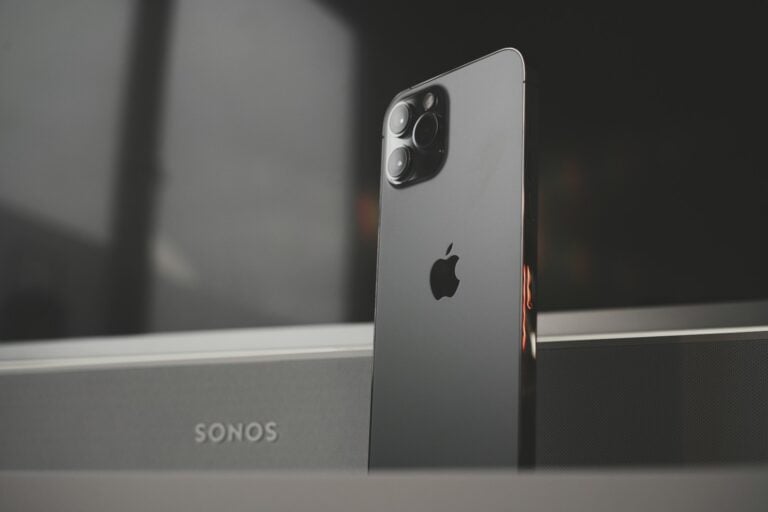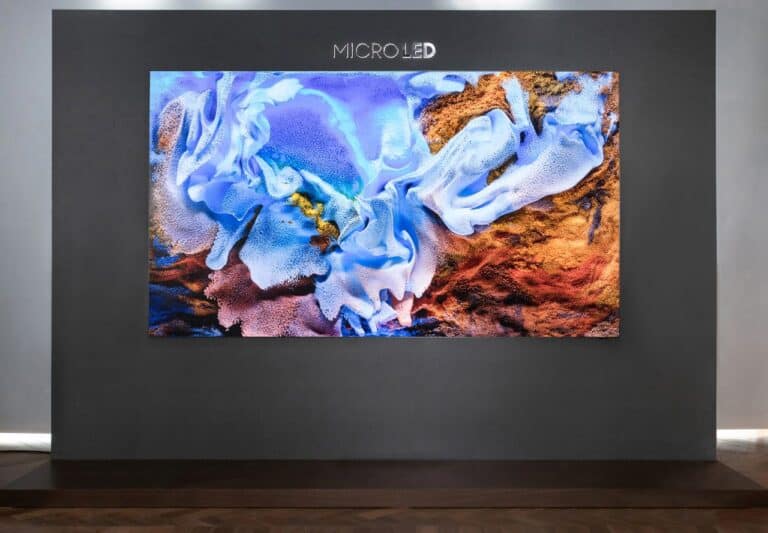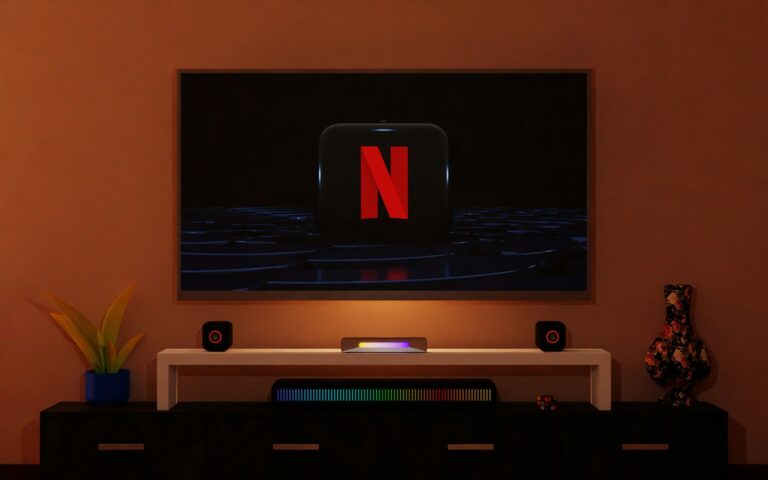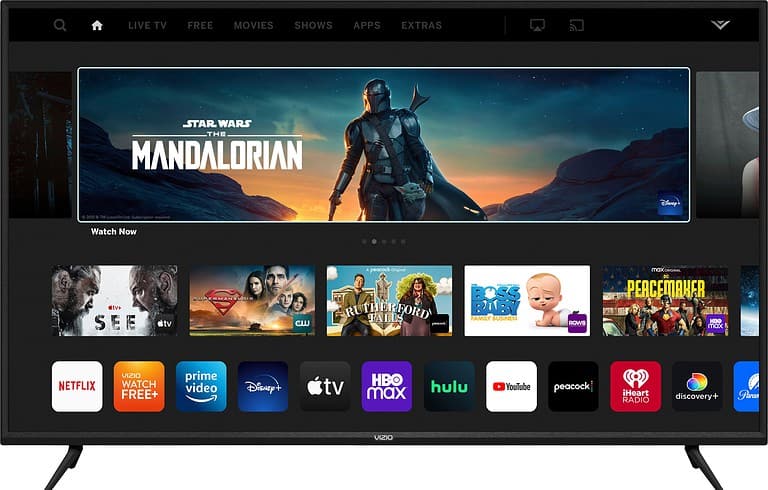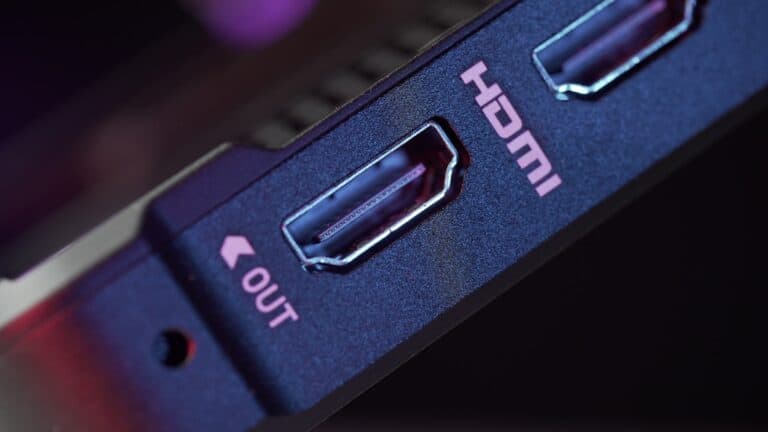
Have you ever noticed fingerprints, dust, or smudges on your TV screen that distract from your viewing experience? Cleaning your TV screen might seem simple, but using the wrong method can cause permanent damage to today’s sensitive displays. Modern flat-screen TVs require gentle care because they have special coatings that can be easily damaged by harsh chemicals or abrasive materials.
To clean your TV screen safely, use a soft, lint-free microfiber cloth and gently wipe in a circular motion without applying pressure. For stubborn smudges, you can slightly dampen the cloth with distilled water, but never spray any liquid directly onto the screen. Avoid cleaning products containing alcohol, ammonia, or acetone as these can strip the screen’s protective coating and cause cloudy spots or permanent damage.
Remember that prevention is better than cure when it comes to TV screens. Keeping the remote clean, washing hands before touching the screen, and regularly dusting with a dry microfiber cloth can reduce the need for deep cleaning and extend the life of your display.
🧼 Step-by-Step Guide: How to Clean Your TV Screen Safely
1. Turn Off and Unplug the TV
Before cleaning, turn off the TV and unplug it. This:
- Prevents electrical accidents.
- Makes smudges and dust easier to see on a dark screen.
2. Use a Dry Microfiber Cloth First
Gently wipe the screen with a soft, dry microfiber cloth — the kind used for glasses or camera lenses.
- Avoid paper towels, tissues, or rough fabrics; they can scratch the screen.
- Use light pressure and wipe in circular or straight motions.
💡 Tip: Many smudges and dust can be removed this way—no liquid needed.
3. For Stubborn Smudges: Use a Damp Cloth
If fingerprints or oily spots remain:
- Lightly dampen the microfiber cloth with distilled water or a 50/50 mix of distilled water and white vinegar.
- Wring out the cloth until it’s just slightly damp — never dripping wet.
- Wipe the screen gently.
⚠️ Do not spray liquid directly onto the TV screen. It can seep into the edges and damage internal components (source: Consumer Reports).
4. Dry the Screen
Use a second dry microfiber cloth to remove any remaining moisture and prevent streaks.
5. Clean the Frame and Remote
- You can use a slightly damp cloth with mild dish soap to wipe the TV frame (not the screen).
- For the remote control, use disinfecting wipes or a cloth with rubbing alcohol — just avoid getting moisture into buttons or openings (source: Real Simple).
🚫 What Not to Use
Avoid the following, as they can strip coatings or damage the display:
- Window cleaners (like Windex)
- Alcohol or ammonia-based cleaners
- Paper towels or tissues
- Abrasive pads
- Excess water or direct sprays
🧽 Optional: Use Screen-Safe Cleaning Kits
If you prefer a commercial cleaner, look for products labeled “screen-safe” or “for LCD/OLED displays.”
These are formulated to clean without harming anti-reflective coatings (source: Tom’s Guide).
✅ Summary
| Step | Action | Key Tip |
|---|---|---|
| 1 | Turn off & unplug | Prevents damage |
| 2 | Wipe with dry microfiber | Removes dust safely |
| 3 | Use damp cloth (water/vinegar) | For fingerprints |
| 4 | Dry with clean cloth | Avoid streaks |
| 5 | Clean frame & remote | Use mild soap/alcohol |
🧠 Final Advice
Clean your TV every few weeks or as needed. Regular light cleaning prevents buildup, keeps your display clear, and extends the life of your screen’s coating.
Key Takeaways
- Always use a soft microfiber cloth and gentle circular motions to clean TV screens without pressing hard on the surface.
- Never spray liquids directly on screens or use cleaners containing alcohol, ammonia, or harsh chemicals that damage protective coatings.
- Regular light dusting prevents buildup and reduces the need for more intensive cleaning that might risk screen damage.
Understanding Your TV Screen
Modern TVs have delicate screens that require specific cleaning methods to prevent damage. Not all screens are created equal, and using the wrong cleaning approach can lead to permanent harm.
Types of TV Screens
Today’s televisions mainly come in three types: LCD, LED, and OLED. LCD (Liquid Crystal Display) screens have a plastic surface that can easily scratch. LED TVs are actually LCD screens with LED backlighting, so they share similar cleaning needs.
OLED (Organic Light Emitting Diode) screens are even more sensitive than LCD displays. These premium screens have extremely thin layers that can be damaged with even slight pressure.
Many modern TVs also feature special anti-glare coatings that reduce reflection. These coatings are delicate and can be stripped away by harsh chemicals like ammonia or alcohol.
Some manufacturers apply proprietary treatments to their screens for better contrast or viewing angles. Always check your TV’s manual for specific cleaning recommendations from the manufacturer.
Risks of Using Wrong Cleaning Methods
Using improper cleaning techniques can lead to permanent damage. Harsh chemicals like window cleaners contain ammonia that can strip away protective coatings and cloud the screen permanently.
Paper towels, tissues, and regular cloths may seem soft but can actually scratch the screen surface. Even small scratches can be visible when the screen displays bright images.
Spraying liquids directly onto the screen is particularly dangerous. Excess moisture can seep into the edges and damage the internal electronics, potentially causing:
- Short circuits
- Screen failure
- Voided warranties
Excessive pressure during cleaning may create dark spots on LCD and LED screens where the liquid crystals become permanently damaged. For OLED screens, pressure can damage the individual pixels, creating dead spots that cannot be repaired.
Preparing to Clean Your Screen
Before cleaning a TV screen, proper preparation ensures the safety of both the screen and the person cleaning it. Taking a few minutes to get ready can prevent costly damage to sensitive display technology.
Gathering the Right Materials
Choosing the right cleaning supplies is crucial for protecting your TV screen. A microfiber cloth is essential as it’s soft enough to prevent scratches while effectively removing dust and fingerprints. These cloths are designed to trap particles rather than push them around the screen.
Never use paper towels, regular cloths, or tissues as they can contain fibers that damage screens.
For stubborn smudges, consider these safe options:
- Distilled water (not tap water which contains minerals)
- Commercial screen cleaner specifically designed for electronics
- Diluted isopropyl alcohol solution (70% or less, mixed 1:1 with distilled water)
Keep a spare dry microfiber cloth handy for final buffing if needed.
Turning Off and Unplugging the TV
Always turn off your TV before cleaning. This serves two important purposes: it makes smudges more visible against the dark screen and eliminates the risk of electrical issues.
For complete safety, unplug the TV entirely from the power source. This prevents any possibility of electrical shock while working with potentially damp cleaning materials near electronic components.
Allow the screen to cool completely if it’s been on for a while. Hot screens are more susceptible to damage from sudden temperature changes when cleaning solutions are applied.
Position yourself with good lighting so you can clearly see the entire screen surface and any problem areas that need special attention.
The Cleaning Process
Cleaning a TV screen requires gentle techniques and the right materials to prevent damage. Following a methodical approach ensures your screen stays clear without scratches or permanent damage.
Dusting the Screen
Before applying any moisture, remove loose dust particles from the screen. This step prevents scratches when wiping later.
Use a soft, dry microfiber cloth to gently sweep across the screen surface. Move in one direction rather than circular motions to avoid grinding particles into the screen.
For stubborn dust in corners or crevices, compressed air can help remove debris without touching the screen. Hold the can about 6 inches away and use short bursts.
Never use paper towels, tissues, or regular cloth, as these materials contain fibers that can scratch your screen’s delicate surface.
Dusting should be done weekly to prevent buildup that becomes harder to remove over time.
Making the Cleaning Solution
The right cleaning solution prevents damage to your screen’s anti-glare coating and internal components.
Safe Cleaning Solution Recipe:
- 1 part distilled water (tap water contains minerals that can leave spots)
- 1 part white vinegar (for tougher smudges)
For most cleaning situations, plain distilled water works effectively. Avoid solutions containing:
- Alcohol
- Ammonia
- Acetone
- Window cleaners like Windex
Many TV manufacturers warn against using commercial cleaners which can strip protective coatings on modern screens.
Never spray any liquid directly onto the screen. Instead, apply the solution to your cloth first to prevent liquid from seeping into the edges and damaging internal components.
Wiping the Screen
Proper wiping technique prevents streaks and damage to the screen surface.
Dampen a clean microfiber cloth with your cleaning solution—it should be just slightly moist, not dripping wet. A damp microfiber cloth removes most smudges and fingerprints effectively.
Gently wipe the screen using light pressure in a horizontal or vertical motion. Avoid circular movements as they can create swirl marks on the screen.
For stubborn spots:
- Hold the damp cloth against the spot for 10-15 seconds
- Wipe gently without pressing hard
- Repeat if necessary
Never use your fingernails or abrasive materials to scrape off stuck-on spots. Patience with the right technique preserves your screen’s integrity.
Drying the Screen
Properly drying your TV screen prevents water spots and potential electrical issues.
After cleaning with a damp cloth, immediately use a second, dry microfiber cloth to remove any remaining moisture. Spraying cleaner on the cloth rather than the screen helps prevent excess moisture issues.
Wipe in the same direction as your cleaning strokes for a streak-free finish. Check the screen from different angles under lighting to spot any remaining streaks or smudges.
Allow the screen to fully air dry before turning the TV back on. This typically takes only 3-5 minutes but prevents any potential short circuits from residual moisture.
Store your microfiber cloths in sealed plastic bags to keep them clean and dust-free between uses.
Maintaining a Clean Screen
Keeping your TV screen clean requires regular attention and the right techniques to prevent damage over time. A well-maintained screen not only looks better but also ensures optimal viewing quality.
Regular Cleaning
TV screens should be cleaned about once a week to prevent dust buildup. Turn off your TV before cleaning and allow it to cool down completely. This prevents streaking and makes smudges more visible.
Use a soft microfiber cloth for most cleaning jobs. These cloths are gentle on delicate screens and trap dust effectively without scratching the surface.
For light dust, a dry microfiber cloth works perfectly. Gently wipe in a circular or straight motion across the screen.
For stubborn smudges, slightly dampen the cloth with distilled water. Never spray liquid directly onto the screen. For tougher spots, some experts recommend using a highly diluted mild dish soap solution applied to the cloth first.
Avoid cleaning products containing:
- Alcohol
- Ammonia
- Acetone
- Harsh chemicals
Avoiding Dust and Smudges
Prevention is easier than cleaning. Place the TV away from high-traffic areas to minimize exposure to fingerprints and accidental touches.
Consider the TV’s environment carefully. Avoid locations near windows or under ceiling fans where dust circulation is higher. Air purifiers can help reduce airborne dust in the room.
Keep food and drinks away from the viewing area. Snack residue and beverage splashes are common causes of screen damage.
For homes with children, establish a “no-touch” rule for the TV screen. Consider mounting the TV on a wall to make it less accessible to curious little fingers.
When not watching TV, some owners use a protective dust cover or screen protector designed for their specific model. These can significantly reduce cleaning frequency.
Dos and Don’ts of TV Screen Cleaning
Proper TV screen cleaning requires gentle handling and the right materials. Modern flat screens have sensitive coatings that can be permanently damaged by common cleaning mistakes.
Choosing the Right Cleaning Products
The safest way to clean a TV screen is with a dry, soft microfiber cloth. These special cloths are designed to remove dust and fingerprints without scratching delicate surfaces. Gently wiping with a dry microfiber cloth is considered the most universally approved cleaning method.
For stubborn smudges, a slightly dampened microfiber cloth can be used. The cloth should be barely moist – never wet enough to drip. Some manufacturers also sell specialized screen cleaners designed specifically for flat-screen TVs.
When purchasing a commercial screen cleaner, look for products labeled specifically for use on electronics or TV screens. Always check the manufacturer’s instructions before using any cleaning product on the screen.
Avoiding Harsh Chemicals and Abrasive Materials
Never use paper towels, tissues, or regular cloths to clean TV screens. These materials contain fibers that can scratch the screen’s surface. Even soft cotton can be too rough for modern displays.
Harsh chemicals must be avoided at all costs. Products containing alcohol, ammonia, or acetone can strip away the screen’s protective coating. This includes common household cleaners like Windex and similar products.
Traditional glass cleaner might have worked on old CRT televisions with actual glass screens, but these products will damage today’s LCD, LED, OLED, and plasma screens.
Products to avoid:
- Window/glass cleaners
- All-purpose cleaners
- Products containing alcohol or ammonia
- Abrasive powders or creams
- Sanitizing wipes
Always turn off and unplug the TV before cleaning to better see smudges and reduce the risk of electrical issues.
Frequently Asked Questions
Cleaning your TV screen properly requires the right techniques and materials to avoid damage while achieving a crystal-clear display. These common questions address specific concerns and provide practical solutions for safe cleaning practices.
What is the best method to clean a flat-screen TV without causing damage?
The safest way to clean a flat-screen TV is to use a soft, clean, lint-free, dry cloth. Microfiber cloths are highly recommended as they effectively remove dust without scratching the delicate screen surface.
Turn off the TV before cleaning and allow it to cool down. This helps prevent smudges and makes it easier to see dust or smears on the dark screen.
For regular maintenance, simply wipe the screen gently in a circular motion with the dry microfiber cloth. Avoid applying pressure as this could damage the pixels in the display.
Are there any safe solutions to spray on a flat-screen TV for cleaning purposes?
Most manufacturers recommend against spraying anything directly onto TV screens. Liquids can seep into the edges and damage internal components.
For stubborn stains, a highly diluted solution of mild dish soap with water can be used. Apply the solution to a microfiber cloth first—never directly to the screen—and ensure the cloth is only slightly damp, not wet.
Commercial screen cleaners designed specifically for electronics are available, but check the TV’s manual first to ensure compatibility with the screen type.
How can I effectively clean my TV screen without leaving streaks behind?
To prevent streaks, use a high-quality microfiber cloth that’s clean and free of any debris. Dirty cloths can transfer particles back onto the screen, causing streaks.
Clean the entire screen using gentle, circular motions. Avoid pressing too hard, which can cause damage and create more streaking.
For particularly stubborn streaks, a second pass with a fresh, dry microfiber cloth can help remove any remaining moisture or residue without adding chemicals.
Is it possible to clean a television screen safely without a microfiber cloth?
While microfiber cloths are ideal, other soft, lint-free options can work in a pinch. Clean cotton t-shirts or eyeglass cleaning cloths may serve as temporary alternatives.
Paper products like tissues, paper towels, or napkins should never be used. These can contain wood fibers that scratch the screen surface.
Regular cleaning cloths or rags might be too abrasive and could potentially damage the screen coating, so they should be avoided when possible.
What are the risks of using wet wipes on my television screen, and how can I avoid them?
Wet wipes often contain alcohol, ammonia, or other harsh chemicals that can damage the protective coating on flat-screen TVs. These chemicals strip away the anti-glare coating over time.
The excessive moisture in wet wipes poses a risk of liquid seeping into the TV’s internal components, potentially causing short circuits or electrical damage.
To avoid these risks, stick with dry or slightly dampened microfiber cloths, and check the TV manufacturer’s specific recommendations for cleaning products.
What are some professional tips for maintaining a streak-free and damage-free TV screen during cleaning?
Professionals recommend cleaning TV screens in a gentle, circular motion rather than up and down or side to side. This technique helps prevent streaking and distributes pressure evenly.
Clean the screen when it’s cool to the touch. Hot screens can evaporate cleaning solutions too quickly, leaving residue behind that appears as streaks.
Establish a regular cleaning schedule to prevent buildup of dust and fingerprints. Light, frequent cleaning is gentler on screens than occasional deep cleaning of accumulated grime.

